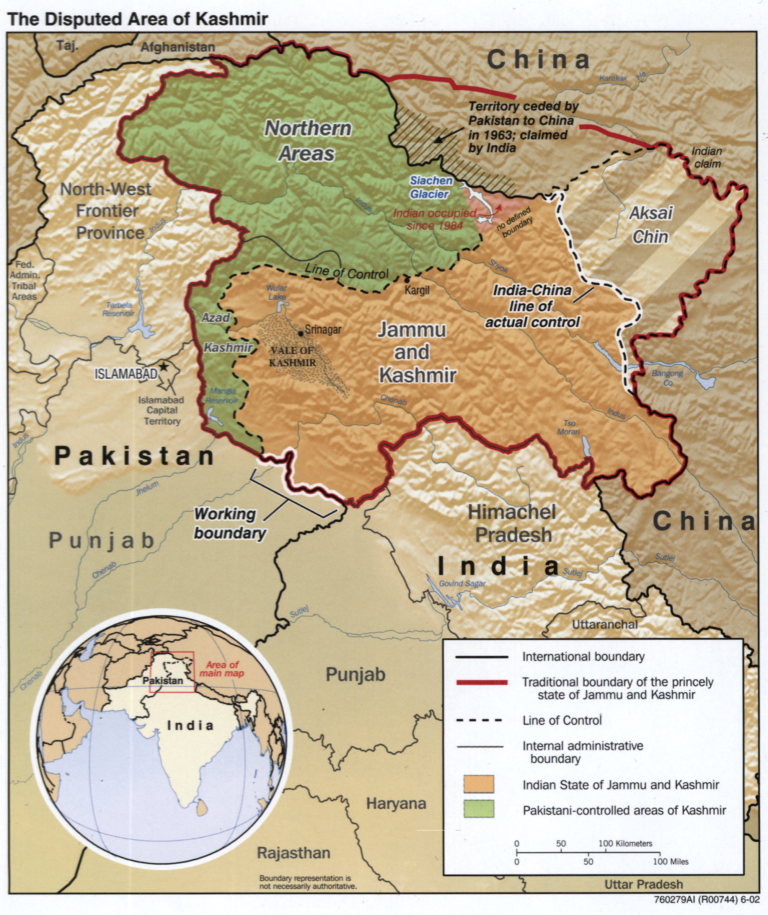In mid-January 2003, a new shortwave station called Radio Sada-e-Kashmir (Voice of Kashmir) hit the airwaves in Southern Asia. It was first noted broadcasting in the Kashmiri language at 0230 - 0310 UTC, followed by programming in the Dogri language at 0310 - 0330 UTC on 9890 kHz.
In the initial era, the carrier and test tone were heard for about 20 minutes before the actual broadcast began. The program itself started with a long regional anthem, and the sign on announcement included station identification and the date of broadcast. This service was beamed to the Kashmir areas of Pakistan and India, and each program consisted of songs and political talks.
Interestingly, back more than half a century ago during the 1965 India-Pakistan conflict, an underground radio station with the same name, Radio Sada-e-Kashmir, began broadcasting on shortwave with also propaganda type programming. Although it claimed to be carrying out its broadcasts from the Kashmir valley itself, yet it was later established that those broadcasts were actually aired from elsewhere in Pakistan proper.
Now regarding the subsequent version of Radio Sada-e-Kashmir, in their second month on the air in February 2003 their frequency was moved down to the 49 metre band on 6130 kHz, and a second daily broadcast was noted at 1500 - 1600 UTC, also on that same new frequency. Then during the following month March 2003, a third daily broadcast was noted at 0730 - 0830 UTC on the original 31 metre band channel 9890 kHz.
From then onwards, there were three daily broadcasts; one in the morning, one in the afternoon, and one in the evening. The same program was broadcast three times each day, starting at 0230 UTC and repeated at 0730 UTC and again at 1430 UTC. Note that Kashmir observes Indian Standard Time which is UTC+ 5½ hours, making the local time for the broadcasts 6 am, 1 pm and 8 pm.
At least until the year 2008, the shortwave frequency 6100 kHz was used for the morning and evening broadcasts, though seven years later (2015), that was changed to 4870 kHz in the tropical 60 m band. Then around the year 2017 there was another change in scheduling with 6030 kHz in use for the morning and evening broadcasts, and 6100 kHz was now used again for the afternoon transmission.
Back at the beginning in March 2003, there were clear indications that the second version of Radio Sada-e-Kashmir was on the air via a shortwave transmitter operated by AIR All India Radio. On occasions AIR programming was inadvertently broadcast on the same frequency both before and after the Kashmiri broadcasts, and even at times during the Kashmiri broadcast.
It was also an open secret for international radio monitors living in Southern Asia that the broadcasts from the second version of Radio Sada-e-Kashmir were on the air from New Delhi as these frequencies were registered by All India Radio in the HFCC website. At first, a 100 kW transmitter was used, and subsequently from around 2016, a 250 kW one.
On occasions, this Radio Sada-e-Kashmir was noted off the air for short periods of time, due apparently to transmitter problems. However, this station left the air permanently on December 31, last year (2021) just as silently as it had begun some 18 years earlier. Their final program ended at 1530 UTC on 6030 kHz. Perhaps it was no coincidence that on that same day the AIR shortwave stations AIR stations in Srinagar, the capital of Jammu & Kashmir, also ended their shortwave transmissions.
It may also be noted that the 6 MHz frequencies in use by the second Radio Sada-e-Kashmir were close to the day time-frequency of AIR Srinagar, which is 6110 kHz. No contact address was ever given by this station and there are no known QSLs issued by this station.
That is the story of the two shortwave stations that operated under the same title, Radio Sada-e-Kashmir; one in 1965 on one side of the border (Pakistan), and the other from 2003 - 2021 on the other side of the border (India).
(Adrian Peterson, AWR-Wavescan 686)
